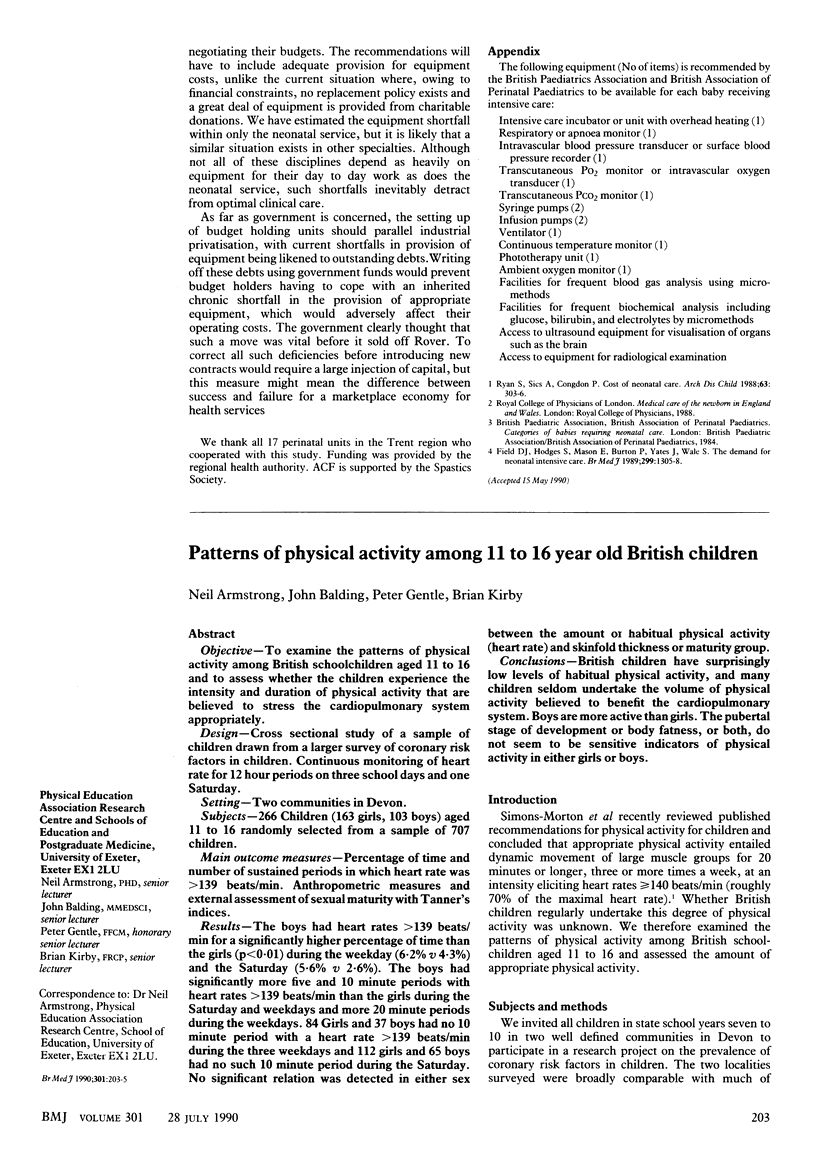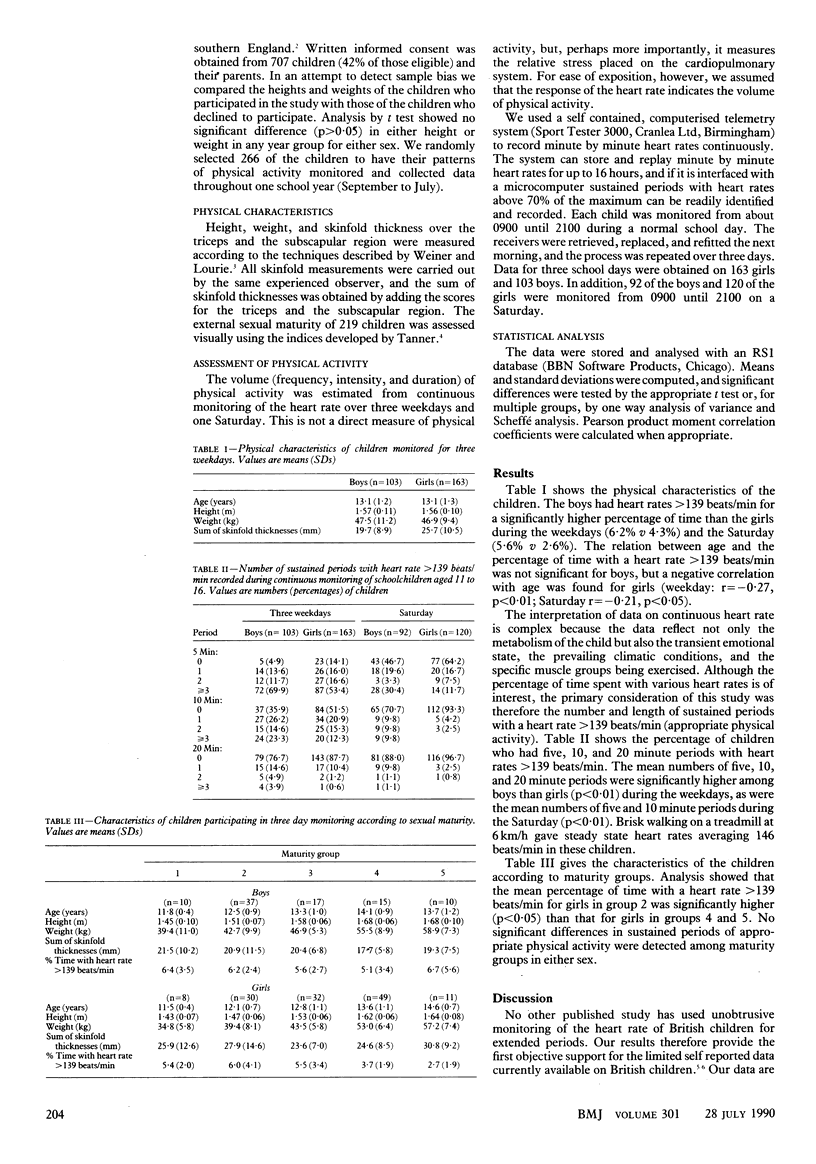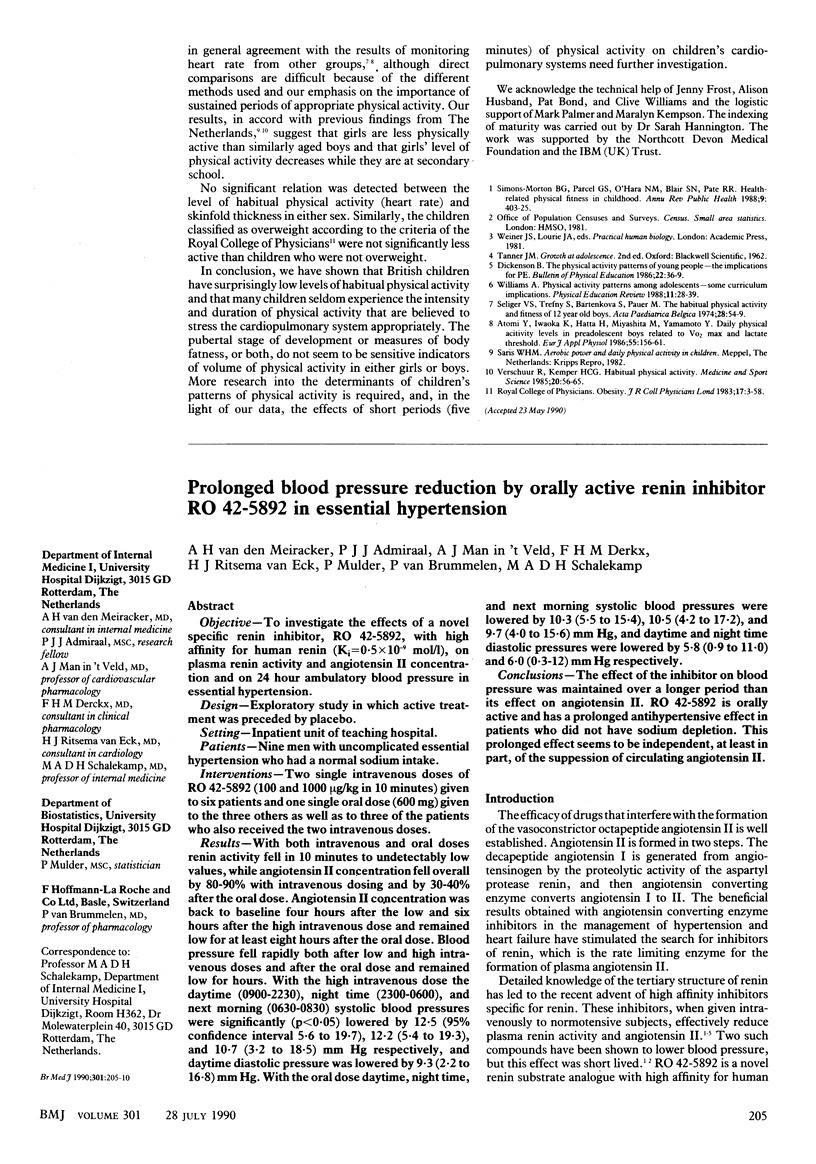Abstract
OBJECTIVE--To examine the patterns of physical activity among British schoolchildren aged 11 to 16 and to assess whether the children experience the intensity and duration of physical activity that are believed to stress the cardiopulmonary system appropriately. DESIGN--Cross sectional study of a sample of children drawn from a larger survey of coronary risk factors in children. Continuous monitoring of heart rate for 12 hour periods on three school days and one Saturday. SETTING--Two communities in Devon. SUBJECTS--266 Children (163 girls, 103 boys) aged 11 to 16 randomly selected from a sample of 707 children. MAIN OUTCOME MEASURES--Percentage of time and number of sustained periods in which heart rate was greater than 139 beats/min. Anthropometric measures and external assessment of sexual maturity with Tanner's indices. RESULTS--The boys had heart rates greater than 139 beats/min for a significantly higher percentage of time than the girls (p less than 0.01) during the weekday (6.2% v 4.3%) and the Saturday (5.6% v 2.6%). The boys had significantly more five and 10 minute periods with heart rates greater than 139 beats/min than the girls during the Saturday and weekdays and more 20 minute periods during the weekdays. 84 Girls and 37 boys had no 10 minute period with a heart rate greater than 139 beats/min during the three weekdays and 112 girls and 65 boys had no such 10 minute period during the Saturday. No significant relation was detected in either sex between the amount or habitual physical activity (heart rate) and skinfold thickness or maturity group. CONCLUSIONS--British children have surprisingly low levels of habitual physical activity, and many children seldom undertake the volume of physical activity believed to benefit the cardiopulmonary system. Boys are more active than girls. The pubertal stage of development or body fatness, or both, do not seem to be sensitive indicators of physical activity in either girls or boys.
Full text
PDF


Selected References
These references are in PubMed. This may not be the complete list of references from this article.
- Atomi Y., Iwaoka K., Hatta H., Miyashita M., Yamamoto Y. Daily physical activity levels in preadolescent boys related to VO2max and lactate threshold. Eur J Appl Physiol Occup Physiol. 1986;55(2):156–161. doi: 10.1007/BF00714998. [DOI] [PubMed] [Google Scholar]
- Seliger V., Trefny Z., Bartunková S., Pauer M. The habitual activity and physical fitness of 12 year old boys. Acta Paediatr Belg. 1974;28 Suppl:54–59. [PubMed] [Google Scholar]
- Simons-Morton B. G., Parcel G. S., O'Hara N. M., Blair S. N., Pate R. R. Health-related physical fitness in childhood: status and recommendations. Annu Rev Public Health. 1988;9:403–425. doi: 10.1146/annurev.pu.09.050188.002155. [DOI] [PubMed] [Google Scholar]


